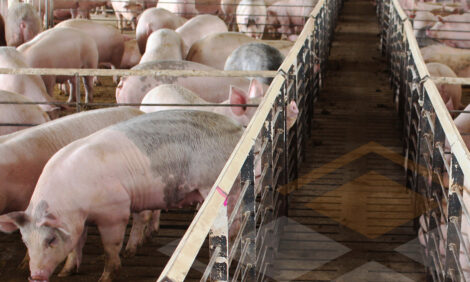



Agriculture in the United Kingdom 2003
By Defra - Agriculture in the United Kingdom fulfils the requirements under the Agriculture Act 1993 that ministers publish an annual report on such matters relating to price support for agricultural produce as they consider relevant and cover in the report developments in agricultural policy, including policy on agriculture and the environment. This report is taken from Chapter 6 and looks purely at the pigs and pigmeat commodity information. A full contents list is also provided.
Contents
|
All files are in PDF Format
Contents and preface The future of UK Agriculture in a Changing World Chapter 1 - Key events in 2003 Chapter 2 - Farming income and agriculture in the economy Chapter 3 - The structure of the industry Chapter 4 - Trade Chapter 5 - Prices Chapter 6 - Commodities Chapter 7 - Organic farming Chapter 8 - Accounts Chapter 9 - Productivity Chapter 10 - Subsidies Chapter 11 - Conservation and land management Chapter 12 - Environment Chapter 13 - Public expenditure on agriculture Internet sites and Defra publications Whole publication Annex 1 - Market prices Annex 2 - Organic holdings |
File Size
83kb 50kb 54kb 155kb 126kb 94kb 164kb 220kb 60kb 184kb 103kb 90kb 87kb 230kb 115kb 50kb 592kb 86kb 496kb |
Pigs and Pigmeat
The value of production of pigs fell by 0.5 per cent in 2003 to £678 million, half the peak value of £1.4 billion in 1996, due primarily to the value of home-fed production of pigmeat falling by 0.4 per cent to £686 million; its lowest value since the publication of Agriculture in the United Kingdom began in 1988.
Prices strengthened markedly in 2003, with UK prices peaking at a 6 year high in mid June. Despite the subsequent fall in these prices due to cheaper imports and the decline in demand for pork as a result of the hot weather, the average clean pig price for the 2003 year of 102.5 pence per kg deadweight was sufficient to insulate the value of this sector from lower productivity.
Marketings of clean pigs fell by 12 per cent, primarily due to the continued contraction of the breeding herd as a result of higher imports but also because of the disrupted breeding patterns and developing sow infertility problems coupled with a higher incidence of the pig wasting disease PMWS. Average carcase weights of clean pigs continued to increase, averaging 73.8 kg, about 4.7 kg a pig more than in 1999. Home-fed production of pigmeat fell by 11 per cent to 689 thousand tonnes. This decrease impacted more on the production of pork than it did on the production of
bacon and ham.
Home-fed production of pork declined by 7.6 per cent to 577 thousand tonnes while the amount of pork available for domestic use fell by 5.6 per cent to 800 thousand tonnes, as the continued recovery in exports following the outbreak of foot-andmouth disease in 2001 has been more than offset by the rise in imports. Exports, however, are still at their lowest level since 1990 (excepting 2001 and 2002) while imports are the highest ever recorded at 316 thousand tonnes.
In 2003, home-cured production of bacon remained stable at 200 thousand tonnes and the amount available for domestic use fell by 0.4 per cent to 479 thousand tonnes. As a result, imports now contribute over 60 per cent of the domestic supplies
of bacon and ham.
Purchased Animal Feed
The total cost of all purchased animal feed went up slightly by £38 million or 1.7 per
cent to £2.2 billion in 2003. Compound feed volumes were slightly reduced overall
due mainly to a decline in pig and poultry compound production reflecting the
shrinking UK pig herd. This was offset by an increase in straight feed sectors - straight
concentrates increased by 7.1 per cent. Inter/intra farm transfer decreased by 1.2
per cent. Overall the total volume of purchased feed was up 1.9 per cent in 2003.
Source: Defra - April 2004






